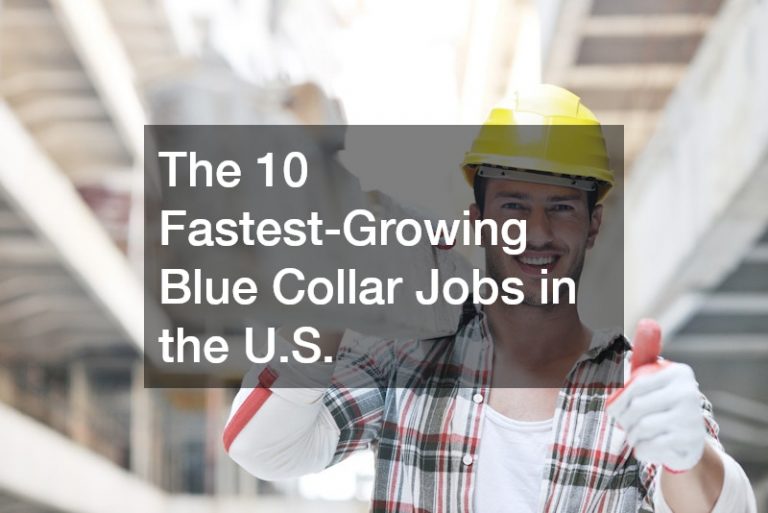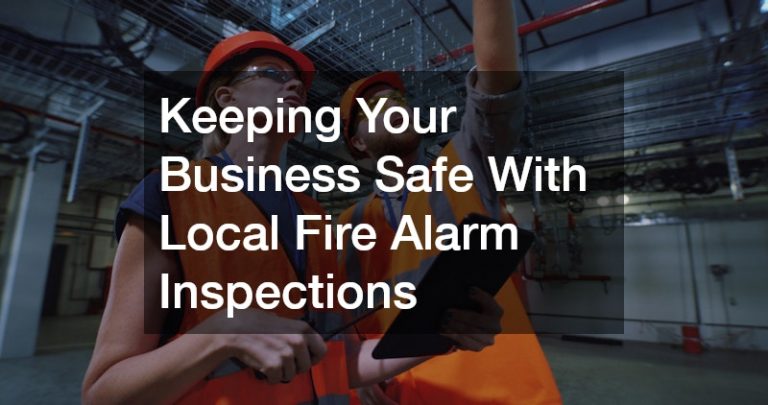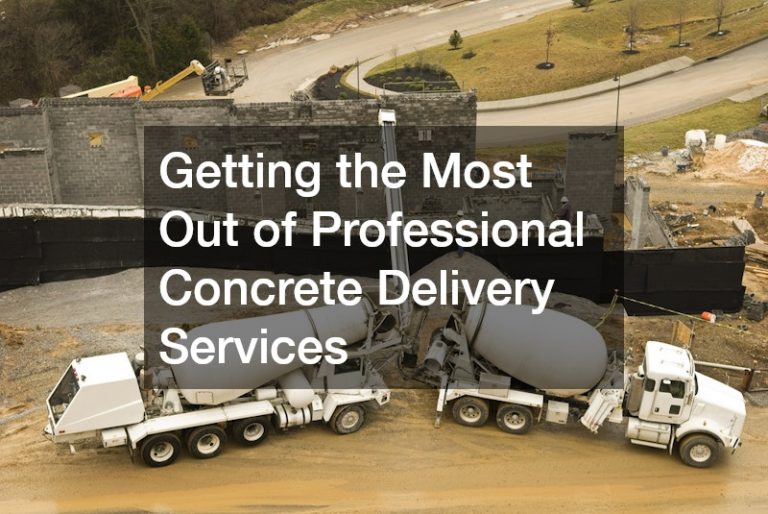In today’s fast-paced business environment, the focus often shifts towards maximizing productivity and reducing costs. However, the repercussions of unsafe workplace conditions are frequently underestimated. Organizations must understand that prioritizing safety not only protects employees but also safeguards the financial health of the business.
Unsafe workplace conditions can lead to injuries, costly repairs, and even legal complications that can hinder a company’s growth trajectory. Safety should not be treated as an optional expense; rather, it should be viewed as a fundamental aspect of operational strategy. A proactive approach to safety can ultimately enhance employee morale and boost overall efficiency.
This article delves into the various ways unsafe workplace conditions drain financial resources. We’ll explore how neglecting safety protocols can impact numerous aspects of your operations, from everyday maintenance to comprehensive legal liabilities.
The Unseen Financial Drain: How Safety Oversights Impact Your Bottom Line
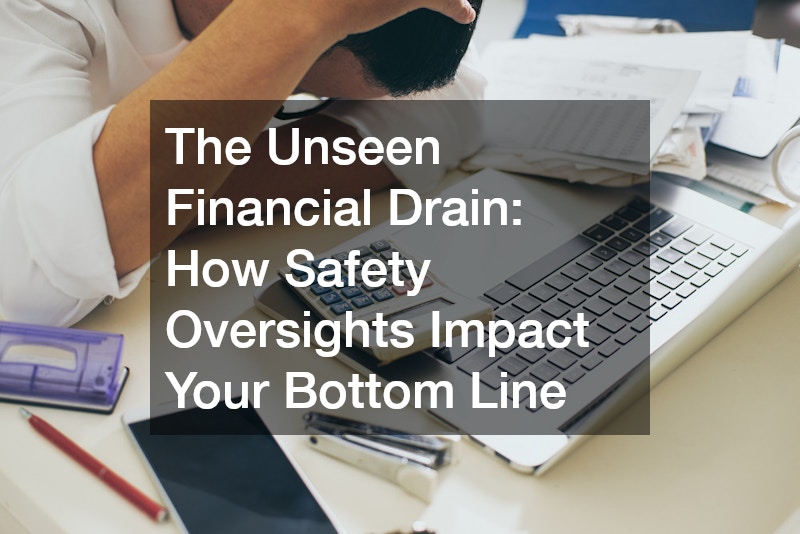
Unsafe workplace conditions often lead to hidden financial drains that may not be immediately apparent to business owners. These oversights can result in costly accidents that strain both human resources and financial reserves. In many cases, businesses only become aware of these costs after an incident has occurred, further exacerbating the financial impact.
Consider, for example, the expenses associated with a workplace injury. Beyond immediate medical costs, businesses may face increased insurance premiums, potential litigation costs, and a temporary decrease in productivity due to staff shortages. Each of these factors contributes to a declining bottom line and affects long-term business viability.
Furthermore, the failure to maintain a safe environment may result in damaged employee trust and morale. This decline in workplace culture can lead to increased turnover rates, requiring the organization to allocate funds toward recruitment and training of new personnel. Ultimately, the unseen financial drains of unsafe workplace conditions can create a ripple effect that influences nearly every aspect of operations.
When Repairs Pile Up: The True Cost of Neglecting Workplace Safety
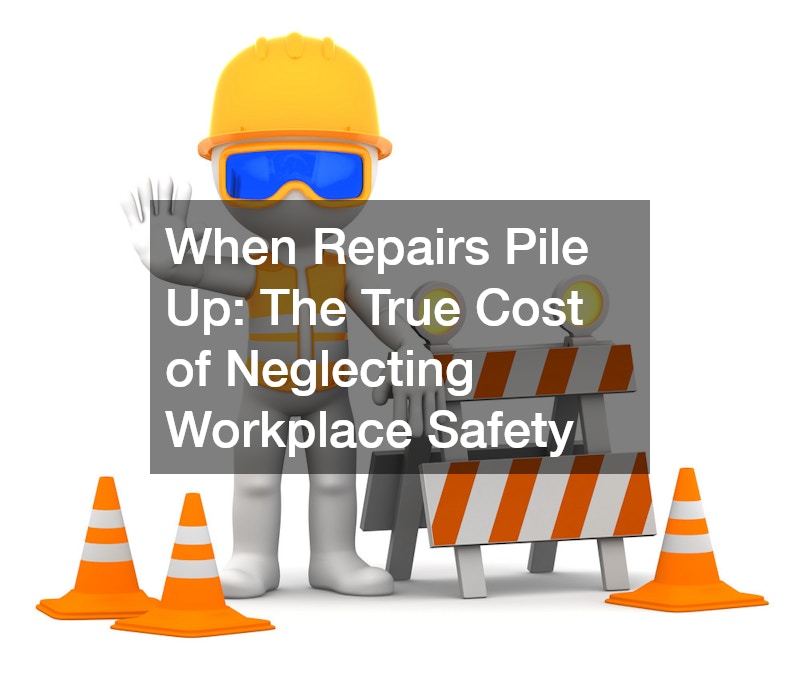
Neglecting workplace safety leads to an accumulation of repairs that can burden a company financially. Regular maintenance can become prohibitively expensive if safety protocols are overlooked, as minor issues can escalate into major problems. For instance, ignoring routine checks on commercial garage doors could lead to emergency repairs that are substantially costlier than preventative measures. Getting regular maintenance and services like commercial garage door repairs as soon as they’re needed is key.
Each repair that results from neglect is a direct cost that could have been avoided through consistent oversight and adherence to safety regulations. Organizations may find themselves in a cycle of reactive repairs, where their focus shifts away from productive work and toward fixing safety-related issues. This not only drains financial resources but also limits the ability to invest in growth opportunities.
The aftermath of neglecting safety goes beyond immediate financial burden; it can also harm the company’s reputation. Stakeholders, including clients and customers, may question a business’s credibility when they learn of unsafe workplace conditions. This damage to reputation can lead to lost contracts, clients turning to competitors, and ultimately a decline in revenue.
From Clean Up to Clean Slate: The Hidden Expenses of Unsafe Environments
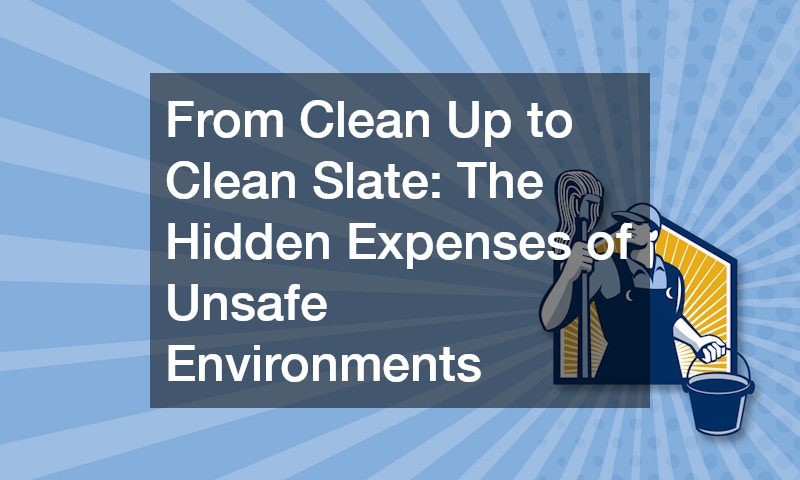
A cluttered and unsafe environment doesn’t just pose risks to employees; it leads to significant cleanup costs post-incident. Companies often overlook the financial implications of hazardous working conditions, which require extensive services such as a commercial pressure washing service and post construction clean up service. These are reactive solutions that can siphon off funds that might have been better used for proactive safety measures.
The costs don’t stop at physical cleanup; they can also extend to long-term solutions like hiring a commercial property water remediation company, especially when unsafe conditions lead to water damage or hazards. The financial burden of extensive remediation work can take a heavy toll on small businesses, diverting funds away from growth initiatives and innovations. This makes it imperative for businesses to prioritize a clean and safe working environment as a primary strategy. Inside and out, always be sure to prioritize keeping things safe, tidy, and looking good. Consider regular service schedules with experts like landscapers and your asphalt contractor to make sure you keep up with the property.
Investing in safety not only reduces the need for extensive clean-up efforts but also fosters a culture of accountability within the organization. When employees feel safe and secure in their environment, productivity generally rises, leading to improved business outcomes. A clean slate is not just about aesthetics; it also represents a fresh opportunity for enhanced operational efficiency under safe workplace conditions.
Water Damage Secrets: How Safety Negligence Can Lead to Costly Repairs

Water damage is one of the most insidious outcomes of unsafe workplace conditions, often appearing in unexpected places. Failing to address potential leaks or flooding through proper safety measures can lead to intricate repair needs and hefty bills. Collaborating with a commercial property water remediation company after an incident reveals just how devastating the fallout can be.
Ignoring minor water issues can allow mold growth and structural damage to flourish, resulting in exponentially higher costs than immediate remediation would have entailed. Repairing water damage not only requires structural work but can also impact electrical systems and require emergency plumbing company interventions. This cascade of necessary repairs illustrates the hidden costs born from negligence.
Moreover, in addition to the cost of repairs, the presence of water damage can lead to decreased employee satisfaction, lower productivity, and higher absenteeism. When employees work in unsafe conditions, such as those compromised by water damage, it directly affects their performance levels. Recognizing these potential pitfalls can help organizations appreciate the value of preventive safety measures before repairs become a critical issue.
Security at Stake: The Unexpected Costs of Compromised Safety Features
When businesses neglect workplace safety, their security features often become compromised, leading to a multitude of financial setbacks. A breach of safety can expose physical assets and sensitive data to unauthorized access, leading to potential theft or loss. This could necessitate expensive repairs such as motorized gate repairs or reinforcement of existing safety features, incurring added costs that could have been avoided with due diligence.
The repercussions of compromised security stretch beyond immediate financial losses, as they can disrupt trust between employees, customers, and stakeholders. A company’s failure to protect its assets can lead to declining sales and reliance on costly security services to rebuild that trust. Henceforth, it becomes essential to recognize that effective safety management is as much about protecting finances as it is about ensuring physical safety.
Investments in preventive safety measures can yield significant savings over time by minimizing the risk of security breaches. Regular assessments of security features and updates are critical to maintaining a safe environment. By prioritizing safety, companies can protect their physical assets while simultaneously fostering a secure atmosphere that promotes employee engagement and confidence.
Equipment Failures: The Long-Term Price of Ignoring Maintenance
One of the stark reminders of unsafe workplace conditions is the likelihood of equipment failures. Failing to conduct regular maintenance on essential tools and machinery, such as commercial mowers or warehouse equipment, can lead to breakdowns and costly repairs. These disruptions not only hamper productivity but also lead to unexpected expenses that can derail budgets.
Long-term equipment neglect often results in larger repair bills or even the need to purchase entirely new machinery, which can strain financial resources. Companies must realize that investing in routine maintenance can mitigate these risks and enhance operational efficiency. By providing a safe working environment and maintaining machinery, businesses can sidestep the financial pitfalls that accompany unexpected equipment failures.
Moreover, when equipment breaks down, it can lead to halted operations and stagnant workflows, which might result in lost revenue opportunities. Additionally, downtime can increase safety risks for employees, compounding the problem of productivity decline. Investing in safety means investing in stability and continuity, ultimately fostering a healthier work environment with better financial resilience.
Beyond Janitorial Services: The Broader Impact of Safety on Cleanliness
Many organizations treat janitorial services as the sum total of their cleanliness strategy, overlooking the broader implications of unsafe workplace conditions. A clean environment goes hand in hand with safety; unsafe conditions often lead to messes that endanger employee well-being. This means that maintaining cleanliness should be viewed as a comprehensive safety concern rather than merely a cosmetic one.
The engagement of a local janitorial company can provide a surface-level cleanliness, but when unsafe practices are prevalent, the result is often a façade rather than true safety. Without addressing underlying areas of concern, businesses might find themselves regularly needing to clean up more dangerous substances or situations. The connections between safety and cleanliness underscore the necessity to prioritize workplace safety from every angle.
Additionally, maintaining a clean and safe environment boosts employee productivity and enhances morale. Employees who recognize the importance of safety are likely to exhibit greater care and responsibility, fostering an overall culture of accountability. When safety and cleanliness are treated as integral to the company’s identity, it leads to a thriving workplace paired with financial health.
The Ripple Effect: How Unsafe Practices Affect Overall Business Operations
Unsafe workplace conditions create a ripple effect that can disrupt various facets of business operations. When safety is compromised, the organization may face increased insurance costs, operational delays, and damage to its reputation. Each incident can affect stakeholder perceptions, potentially leading to decreased investment or business opportunities.
Moreover, the impact of unsafe practices on employee morale cannot be understated. Workplaces perceived as unsafe may experience increased turnover rates due to employees feeling threatened or undervalued. This revolving door of staffing can drain finances, requiring constant recruitment and training that diverts resources better spent on growth.
The financial implications extend further when considering lost productivity and operational delays, which can stem from employee dissatisfaction and equipment failures. The cycle continues, further weakening the organization’s foundation and complicating its ability to thrive in a competitive marketplace. Investing in safety measures is, therefore, an investment in long-term sustainability.
Employee Safety: An Investment That Saves You Money in the Long Run
Prioritizing employee safety is an investment that frequently pays off in improved productivity and financial savings. Organizations that cultivate a culture of safety are often rewarded with lower rates of workplace accidents, resulting in reduced insurance premiums and fewer emergency repairs. The financial benefits of a safe workplace go beyond immediate safety; they enhance overall organizational resilience.
On the other hand, neglecting safety leads to costly consequences that continuously erode profit margins. The more organizations overlook safety protocols, the more frequent the injuries and accidents become, necessitating additional costs for compensation, repair, and replacement of damaged equipment. Investing in a safety-first approach can create a robust operational strategy that sidesteps these draining expenses while enhancing workplace morale. Even cleanliness should be on your to-do list, as environmental hazards can often be removed with some specialty help. For most projects, consider hiring a commercial pressure washing service to get the job done right.
Furthermore, safer work environments invariably lead to happier employees who are more engaged and less likely to experience chronic absenteeism. Satisfied employees translate to a thriving business atmosphere and increased output. In the long run, the money spent on safety is not merely a cost; it is a strategic investment that enables organizations to build a solid foundation for success.
Preventive Measures: The Key to Avoiding Escalating Repair Costs
Preventive measures are crucial in circumventing the costs associated with disregarding workplace safety. Establishing and maintaining a robust maintenance program can identify and mitigate potential risks before they escalate into serious issues. From regular inspections and training to timely commercial fence repairs and equipment maintenance, these proactive steps can circumvent unnecessary expenses.
Implementing safety audits can also help track potential hazards in the workplace. These audits should encompass a range of factors, including equipment safety checks, security assessments, and structural evaluations. Staying ahead of potential hazards means organizations can avoid the financial strains associated with emergency repairs and legal liabilities stemming from unsafe workplace conditions.
Additionally, ongoing training and open communication with employees about safety practices are vital to maintaining a safe working environment. When employees feel confident in their roles and are aware of the potential hazards around them, it fosters a culture of safety across the organization. Prevention is undeniably an asset that, when prioritized, yields significant financial benefits while ensuring the well-being of all staff members.
The Cost of Chaos: How Unsafe Conditions Disrupt Daily Operations
Chaos in the workplace often originates from unsafe conditions that disrupt daily operations. Whether it’s equipment breakdowns, safety incidents, or employee dissatisfaction, the costs can quickly escalate. When employees fear for their safety, it can lead to decreased concentration and output, ultimately impacting business performance.
Moreover, the time lost due to accidents or repairs directly correlates to diminished productivity and increased operational costs. Each incident not only incurs immediate financial repercussions in terms of medical bills or repairs but can also result in longer-term financial challenges due to a damaged reputation. Businesses that ignore the prevention of chaos through safety protocols often find themselves spiraling into an even greater cycle of instability.
Furthermore, a chaotic work environment can lead to increases in employee turnover, dissatisfaction, and absenteeism. High turnover rates demand greater recruitment costs, training expenses, and lost knowledge—all of which collectively detract from profitability. By sustaining a focus on cultivating a safe and stable working environment, organizations can circumvent chaos and its associated costs.
Overlooked Expenses: The Hidden Price of Inadequate Safety Protocols
Many business owners underestimate the hidden costs associated with inadequate safety protocols, often leading to financial pitfalls. Regulatory fines, employee compensation claims, and litigation costs can dramatically affect the bottom line. When safety is not prioritized, businesses may find their budgets strained by factors they never anticipated.
Each time a safety protocol is glossed over, the potential for dire consequences increases—ranging from minor injuries to catastrophic incidents. The costs tied to inadequate safety measures can quickly spiral out of control, overshadowing the initial investment in proper safety training and equipment. Understanding these hidden expenses is essential for business leaders aiming to maintain financial health.
Developing comprehensive safety policies and regularly reviewing them can help mitigate the risks of hidden expenses. Employers should consistently educate their staff about safety protocols to create an internal culture that emphasizes the importance of workplace safety. By committing to robust safety measures, businesses can ensure they protect their financial resources while fostering a healthier workplace.
Maintaining Safety: A Smart Strategy for Protecting Your Assets
Implementing ongoing safety measures and routine maintenance is a smart strategy for protecting both human resources and financial assets. Businesses should prioritize regular inspections of safety features, equipment, and the overall workspace to prevent deterioration over time. This proactive approach can save significant amounts of money by reducing potential repair needs and mitigating the impact of unsafe workplace conditions.
Furthermore, maintaining safety often translates into higher employee satisfaction and retention rates. When employees view their environment as safe and secure, they are likely to remain loyal and engaged, reducing turnover expenses. Ultimately, creating a workplace where safety is a priority instills confidence and commitment from the workforce, benefiting both the employee and employer.
Investing in safety is not merely a regulatory requirement; it is a crucial aspect of strategic business management. Organizations that prioritize safety and actively maintain safety protocols are equipped to avoid the myriad of financial challenges associated with unsafe conditions. Thus, safety maintenance should be seen as an integral component of any successful operational strategy.
The implications of unsafe workplace conditions extend far beyond immediate safety hazards; they reach deeply into the financial viability of businesses. Understanding how neglecting safety can create unseen financial drains is crucial for any organization seeking sustained success. Investing in safety measures and fostering a culture of accountability not only promotes employee well-being but also protects the bottom line.
As we have examined, preventive safety remains the key to avoiding escalating costs while simultaneously enhancing overall workplace productivity. Businesses must recognize that the cost of inaction can significantly outweigh the investment required to maintain a safe environment. By prioritizing safety, companies ultimately create a solid foundation for growth, sustainability, and a thriving workforce.
Every business, regardless of size or industry, has a responsibility to safeguard its employees and assets against unsafe workplace conditions. This investment in safety leads not only to reduced financial burdens but also to the creation of an environment that nurtures success. Maintain a commitment to safety, and your organization will reap the long-term benefits.







